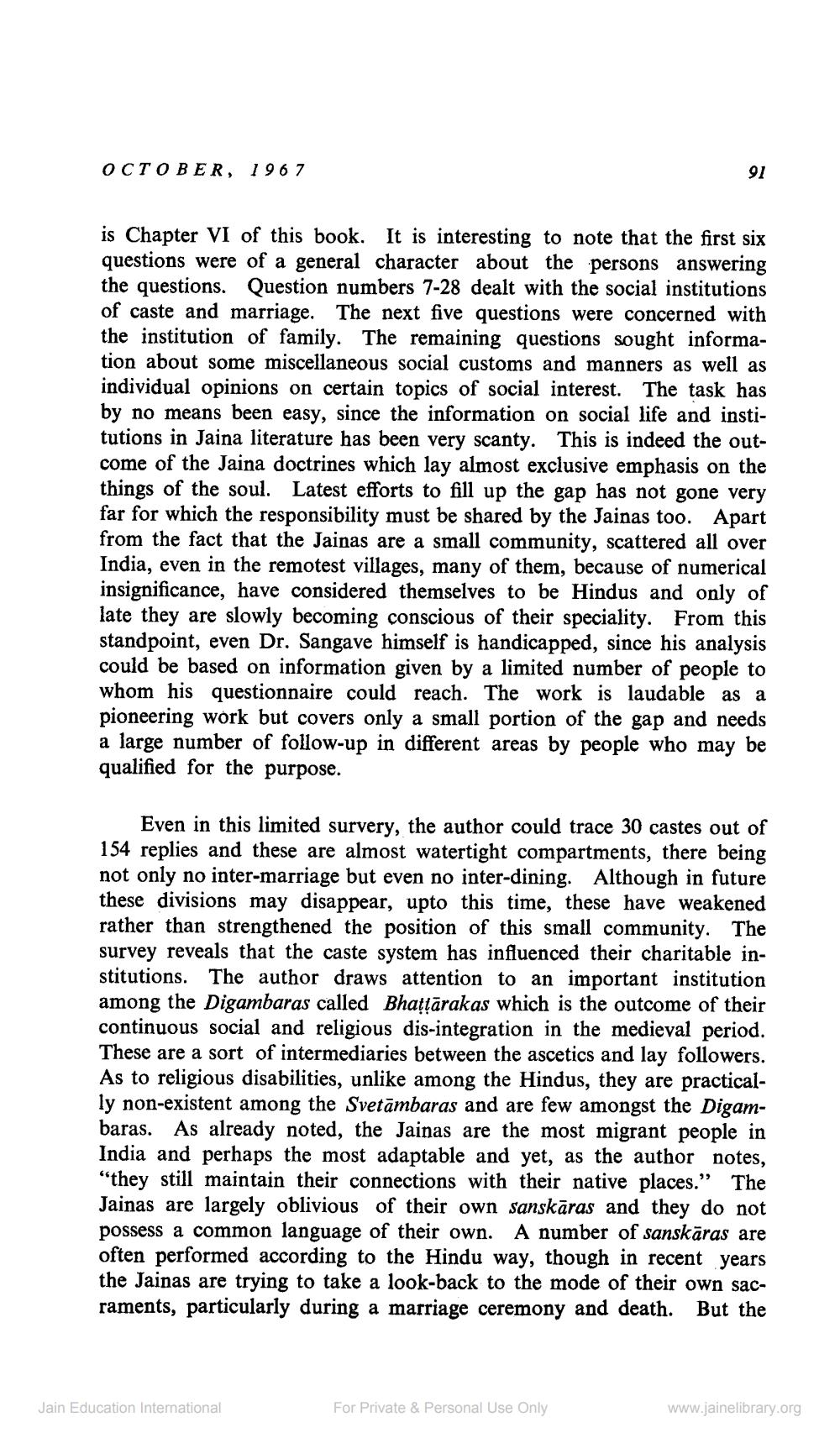Book Title: Jain Journal 1967 10 Author(s): Jain Bhawan Publication Publisher: Jain Bhawan Publication View full book textPage 4
________________ OCTOBER, 1967 is Chapter VI of this book. It is interesting to note that the first six questions were of a general character about the persons answering the questions. Question numbers 7-28 dealt with the social institutions of caste and marriage. The next five questions were concerned with the institution of family. The remaining questions sought information about some miscellaneous social customs and manners as well as individual opinions on certain topics of social interest. The task has by no means been easy, since the information on social life and institutions in Jaina literature has been very scanty. This is indeed the outcome of the Jaina doctrines which lay almost exclusive emphasis on the things of the soul. Latest efforts to fill up the gap has not gone very far for which the responsibility must be shared by the Jainas too. Apart from the fact that the Jainas are a small community, scattered all over India, even in the remotest villages, many of them, because of numerical insignificance, have considered themselves to be Hindus and only of late they are slowly becoming conscious of their speciality. From this standpoint, even Dr. Sangave himself is handicapped, since his analysis could be based on information given by a limited number of people to whom his questionnaire could reach. The work is laudable as a pioneering work but covers only a small portion of the gap and needs a large number of follow-up in different areas by people who may be qualified for the purpose. Even in this limited survery, the author could trace 30 castes out of 154 replies and these are almost watertight compartments, there being not only no inter-marriage but even no inter-dining. Although in future these divisions may disappear, upto this time, these have weakened rather than strengthened the position of this small community. The survey reveals that the caste system has influenced their charitable institutions. The author draws attention to an important institution among the Digambaras called Bhattārakas which is the outcome of their continuous social and religious dis-integration in the medieval period. These are a sort of intermediaries between the ascetics and lay followers. As to religious disabilities, unlike among the Hindus, they are practically non-existent among the Svetāmbaras and are few amongst the Digambaras. As already noted, the Jainas are the most migrant people in India and perhaps the most adaptable and yet, as the author notes, “they still maintain their connections with their native places.” The Jainas are largely oblivious of their own sanskāras and they do not possess a common language of their own. A number of sanskāras are often performed according to the Hindu way, though in recent years the Jainas are trying to take a look-back to the mode of their own sacraments, particularly during a marriage ceremony and death. But the Jain Education International For Private & Personal Use Only www.jainelibrary.orgPage Navigation
1 2 3 4 5 6 7 8 9 10 11 12 13 14 15 16 17 18 19 20 21 22 23 24 25 26 27 28 29 30 31 32 33 34 35 36 37 38 39 40 41 42 ... 50
